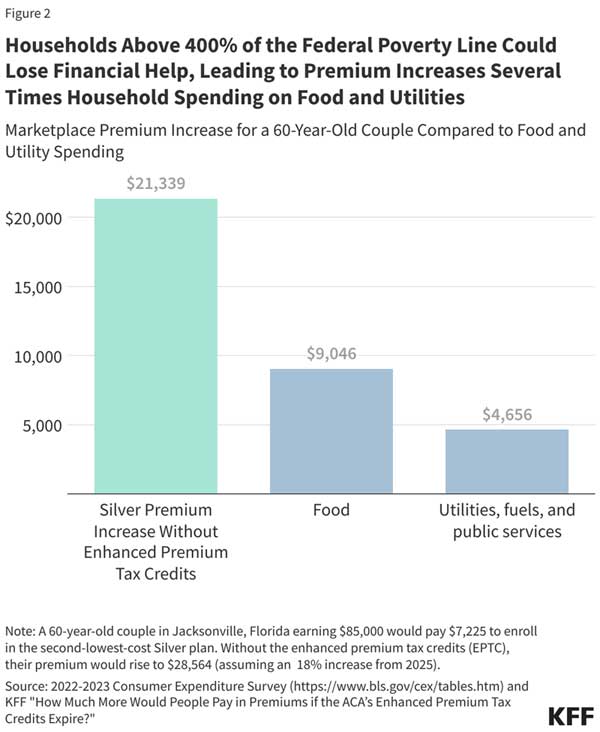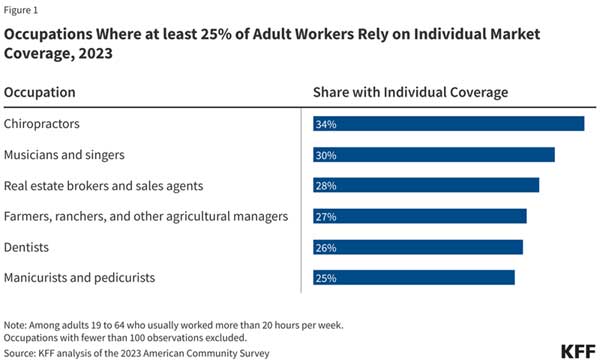Health care already costs a lot. Next year, it could cost even more. Unless Congress acts, millions of people who buy health insurance through the Marketplace, called kynect in Kentucky, will pay significantly higher prices in 2026.
The reason is that enhanced premium tax credits will end on December 31, 2025. These tax credits, also known as premium subsidies, help lower the monthly cost of Marketplace plans. KFF estimates that if the credits end, people who get help will see their average yearly premium go from $888 in 2025 to nearly $1,904 in 2026. That’s more than double the cost.
The enhanced, or larger tax credits began during the COVID-19 pandemic. They helped people afford coverage, and Marketplace enrollment more than doubled. In 2025, 92% of enrollees get help paying for their plans. Without that help, many families will struggle to stay insured.
For example, a 60-year-old couple making $85,000 a year pays about $600 a month now for a Silver plan. Without the extra help, that could rise to $2,380 a month, almost four times higher. Including out-of-pocket costs such as co-pays, co-insurance, and deductibles, their total health costs could reach $48,000 a year, or more than half their income.
Who the Marketplace Helps
The Marketplace helps people who don’t qualify for government health programs such as Medicare or Medicaid and can’t get affordable insurance through a job. About half of adults with Marketplace plans work for or run a small business. Many are self-employed. For jobs in some allied health care fields, farming, real estate, and entertainment, as many as one in four workers depend on Marketplace coverage.
Right now, more than 88,000 Kentuckians have Marketplace insurance. About 88% get premium tax credits to make it affordable. If those credits end, most will see higher costs. Some could lose their coverage completely.
Kentucky already ranks near the bottom in national health outcomes. People here die more often from preventable illnesses and cancer. With recent Medicaid cuts and rising premiums, even more Kentuckians are destined to go without care.
Job-Based Insurance Will Cost More Too
People with job-based insurance will pay more next year too. The Business Group on Health expects employer health costs to rise 9% in 2026, the biggest jump since 2017. Workers could see 6–7% higher premiums and larger deductibles.
That means health care costs are rising for almost everyone, no matter where they get insurance.
Why It Matters
Health insurance is often a family’s second-biggest cost after housing. When health costs rise, people must make hard choices. Some skip doctor visits. Others delay getting medicine or cut back on food or rent just to pay for care.
Our 2024 survey found that 55% of insured Kentuckians skipped or delayed care or prescriptions because of cost.
Having health care coverage helps people see a doctor, get medicine, and avoid huge medical bills. But if costs go up again, many families could lose that safety net.
Open Enrollment for 2026
Open Enrollment for 2026 Marketplace coverage will run November 1, 2025, through January 15, 2026.
- Enroll by December 15 for coverage starting January 1.
- Enroll between December 16 and January 15 for coverage starting February 1.
Even if you intend to keep your current plan, log in and compare options. Insurance companies frequently discontinue or change particular plans. Prices and benefits change every year. Click here for a free tool to help you compare plans.
Looking at the Bigger Picture
These rising costs show how unstable our health care system is. The ability to get and afford coverage can change from one year to the next.
If the U.S. had universal health care, like other high-income countries, people wouldn’t face sudden price hikes or lose insurance because of life circumstances. Health care would be available to everyone, from birth until death.
Health care should be a right, not a luxury.
TAI Founder and CEO Dr. Susan Bornstein spoke with Spectrum News 1 about this topic. Click here to watch that story.



